2010 Land Rover Range Rover: First Drive
When you a buy a watch, you’re often faced with a dilemma. Do you save a bit of money and go for one that looks the part, but can’t go 200 feet under water? Or do you go all about and by the real Swiss deal, that’ll go anywhere and probably last a lifetime?
FAST FACTS
| 1. The new Ranger Rover HSE’s 5.0L V8 makes 375-hp – almost as much as last year’s Supercharged model. |
| 2. A new supercharged V8 option delivers 510-hp and 461 ft-lbs of torque. |
| 3. A Terrain Response system includes five modes: grass, gravel, snow, mud /ruts, sand and rock crawling, as well as a default tarmac setting. |
| 4. The Dynamic Vehicle Control system features active damping technology. It’s standard on Supercharged and optional on HSE. |
| 5. HSE models start at $79,275 with the Supercharged version priced from $95,125. |
It’s a similar story these days when shopping for luxury SUVs. Most are glorified cars, with about as much off-road capability as a pair of stiletto heels, yet those that peddle them, still like to associate their products with outdoorsy lifestyle.
Then of course you’ve got the Range Rover, a vehicle that’s as much at home wading through riverbeds as it is trundling down Rodeo Drive or the King’s Road. Back in 1970, when it was first launched, it’s modern styling; all aluminum V8 and coil-sprung suspension defined what we now call a luxury SUV. Although primitive by modern standards, it was at the time, a major step up from a Series II/III Land Rover.
As we’ve progressed, so has the Range Rover. Now in the twilight of its third-generation, the Rover continues to be what it always was, a shining example of a proper off-roader that packs sophistication and panache. Offered in two trim levels, HSE and Supercharged, starting at $79,275 and $95,125 respectively, for 2010, it’s received a number of upgrades, including new engines, slight suspension changes, upgraded brakes and a revised interior, plus mild tweaks to the exterior styling.
UNMISTAKABLE PROFILE
You’ve got to thank BMW, which owned Land Rover from 1994 to 2004, for the current Rover’s styling. While the second-generation car was generic in the extreme, its successor, launched in 2003, featured the trademark hood profile, rear tailgate and signature greenhouse that aped the original. And although it’s been seven years, the fact that it still looks fresh and unmistakable is testament to a sound basic design.
However, it hasn’t escaped some of the current luxury styling fads, including LED running lights at the front. Circular in nature, they resemble less the entrance to a cheap Las Vegas Casino than some others (Audi are you listening?), but for this author, still smack of a me-too philosophy. A new grille and dual fender vents are also highlights, but despite the facelift, the overall front-end treatment is still rather tasteful and well executed, as one would expect from a Range Rover.
Out back it’s a similar story, double circular projector style lenses actually blend rather well with the traditional tailgate design. There’s no questioning the craftsmanship. Execution and panel fit are darned near flawless.
Inside, while it might look similar at a glance, there have been significant changes, the most obvious being the instrument cluster. Like the Jaguar XF, the Range Rover adopts a Thin Film Transistor screen in place of conventional gauges. Press the ignition start button and the screen lights up. You’ve got a speedometer and tach, plus fuel and temperature readings, but in the center, different modes allow you to view everything from exterior temperature, distance to empty and in off-road mode, the direction of the front wheels, torque bias and also when the differentials lock and open (the tach and speedo actually move apart to give you a clearer view). It’s easy to read no matter what the outside conditions and quite ingenious – expect similar setups to appear in more and more vehicles during the coming years.
Looking around the cabin and it’s still clear that nobody does luxury interiors like the British. There’s not a stitch out of place and everything has a real nice feel to it, but one that’s somehow warm and inviting, as opposed to the cold, hard edged efficiency that characterizes many high end Teutonic offerings.
One thing that is refreshing in this day and age concerns the driving position. It’s lofty and airy, aided by a relatively high floor, low dash and big window openings. The seats are nothing short of sumptuous, both in front and back. The HVAC controls are nicely laid out too and the Terrain Response knob easily accessible by both driver and front passenger.
ABSOLUTE POWER: BIG NEW ENGINES, PLUS RANGE-TOPPING 510-HP SUPERCHARGED MODEL
Although as they say, the devil is in the details, as far as the 2010 Ranger Rover is concerned, the biggest changes are under the skin. The 4.2-liter AJ-series double cam V8 engine has been enlarged to 5.0-liters and it packs a serious wallop. In normally aspirated form (HSE), aided by a direct injection system and high 11.5:1 compression, it packs 375 horsepower and 375 ft-lbs of torque, as much as the old supercharged version.
The new blown engine, with a lower 9.5:1 squeeze, features a sixth generation Eaton positive displacement blower. Combined with valvetrain tweaks and aggressive mapping, it makes a staggering 510-hp and 461 ft-lbs. Coupled to both are a development of the ZF HP28 six-speed automatic gearbox with ‘intelligent’ algorithm, allowing it to respond to the driver’s unique style by altering shift timing and revs to suit his/her particular style. It can also be shifted manually, which is particularly fun on the supercharged version.
In regular street driving the Range Rover is as docile and refined as they come, but punch the loud pedal and it goes. The normally aspirated version is quick enough, but the supercharged motor feels like a turbo jet with afterburner. A vehicle this size almost doesn’t deserve to accelerate this quickly, but it does. According to Land Rover’s official stats, the 0-60 mph dash takes around 5.9 seconds. For a 5,700 lb truck that’s fast, quicker than just about anything on the market perhaps save for things like the Porsche Cayenne Turbo, X5 M or an AMG-tuned M-class.
Fuel economy is not a strong suit, but then again, if you’re buying a Range Rover chances are you don’t really care. Based on our evaluation, around 15 mpg in town and just over 19.5 mpg on the highway is about the best you can expect (14/18 for the supercharged version). Land Rover officially claims averages of 20.3 mpg for the HSE and 18.9 mpg for the Supercharged.
IMPROVED HANDLING AND BRAKES FOR 2010
With its unibody structure and fully independent wishbone suspension, the Range Rover is an ample corner carver too. For 2010 it hustles even better through the bends, thanks to a larger footprint (19-inch wheels and 255/55R19 tires or even larger 20-inch and 50 aspect ratio rubber on Supercharged), plus a retuned suspension aided by a new Vehicle Dynamic Control system. This optimizes the damping rate at each wheel automatically ensuring, minimum body roll and maximum tire contact with the road, allowing for fast entry and exit through corners. It’s particularly welcome on the supercharged version, considering the amount of power and torque at your disposal.
All that thrust requires considerable stopping force, and while the normally aspirated features four-piston front calipers and big 13-inch rotors, the supercharged version, features huge six-pot front clampers and 15-inch discs up front, enough to almost halve stopping distance compared with last year’s truck. Stepping on the pedal hard at speed and braking is fierce, but very well modulated.
Although on-road ability is hard to fault, what really separates the Range Rover from just about anything else on the market, is what it can do off the black stuff. The Terrain Response system as been enhanced for 2010 and includes an improved sand mode, which allows the engine to modulate power to the wheels to ensure the truck doesn’t get bogged down. With the T-R in either mud and ruts or rocks, plus the hill descent control activated and electrically controlled front and rear differentials doing their thing, the Range Rover scrambles over just about anything. We took it down a steep 50-foot embankment, over some very large rocks and tree stumps, waded through a swamp up to the front fender vents and there wasn’t as much a hiccup. Try off-roading in just about any other luxury SUV these days and you’re liable to get stuck on anything rougher than a gravel road.
THE VERDICT
While there might be newer designs on the market, and SUVs priced below the Range Rover’s threshold, there’s still nothing out there that can match it for all-around capability. With its classic looks and notable improvements for 2010, there’s no question that four decades after it’s original introduction, the 4×4 marvel from Solihull is still in a league of its own.
LOVE IT
- Unique styling
- Tremendous power and acceleration (Supercharged)
- All-around versatility
LEAVE IT
- Still pricey
- New running lights a bit of a gimmick
- Voracious fuel consumption
More by Huw Evans














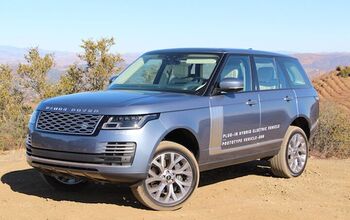
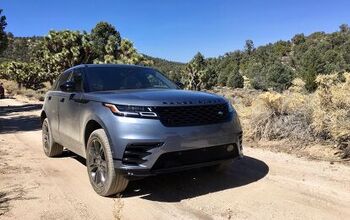


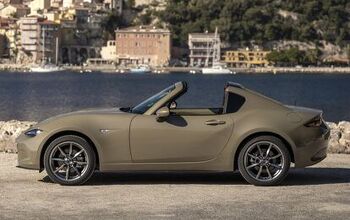
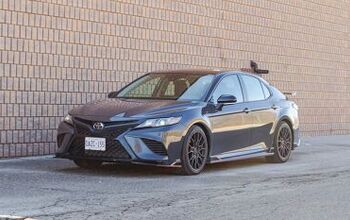
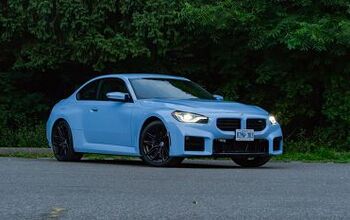
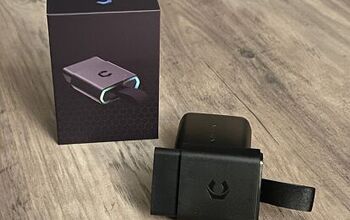




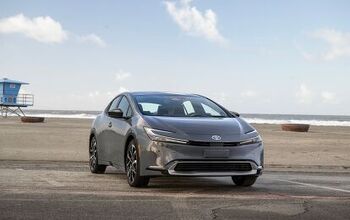

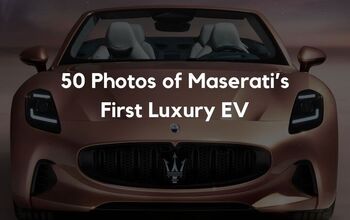
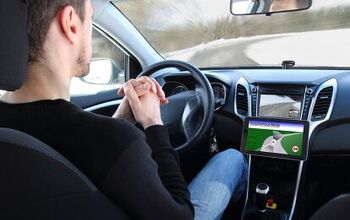
Comments
Join the conversation